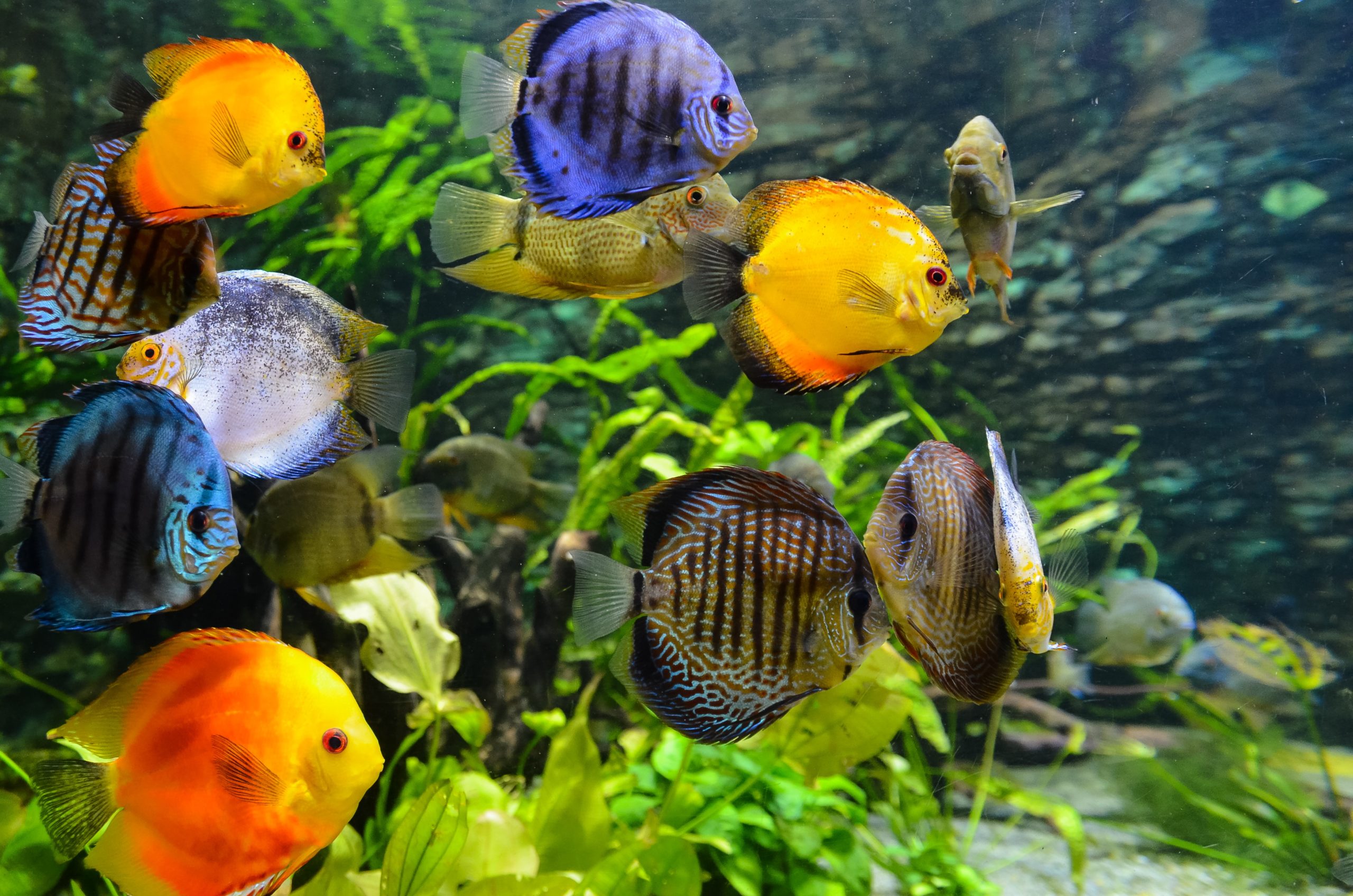Plants in the aquarium

When we first set up our aquariums, live plants were the natural and only available option for aquarium decoration. Since then, technology has come a long way - the aquarist can now choose very attractive plastic and silk plants that are sometimes indistinguishable from natural ones. So which is better - real or artificial plants for aquarium? Even the most experienced aquarists cannot always give an unequivocal answer. Why? Because there is no proverbial single answer. In the end, it all depends on what the aquarium owner prefers.

Living plants
There is nothing better than proudly displaying your beautiful aquarium with fascinating live plants. However, pride is not the main reason why many aquarists prefer live plants.
Live aquarium plants provide a more natural environment for fish and offer benefits that artificial plants cannot. Unlike their plastic counterparts, live plants grow and breathe. They absorb carbon dioxide and release oxygen during the day, contributing to a healthy habitat. Note, however, that this process is reversed at night. In heavily stocked aquariums, carbon dioxide levels can rise sharply at night while oxygen levels drop. If the fish hang close to the water surface in the morning and gasp for air with their mouths, this may be a sign that the oxygen level is too low during the night. In such cases, it may be necessary to run an aerator at night.
Live plants support the bacterial background and help break down waste products from the aquarium inhabitants. A well-maintained aquarium often needs little chemical filtration.
There is also a downside. If plants rot and the waste is not removed quickly enough, they can produce too much waste themselves that cannot be recycled, which in turn can be harmful to fish. In addition, live plants can be a source of pests (such as snails) and other parasites that cause disease in fish and other aquarium inhabitants.
Another important factor is that plastic is inedible, but live plants can be a tasty food for your fish, shrimp and other aquarium inhabitants. This is especially useful for herbivorous fish, as they need to be fed frequently. Live plants make an aquarium attractive and can inhibit algae growth by lowering nitrate levels. On the other hand, plants that are heavily nibbled by the inhabitants can detract from the appearance of the aquarium. So choose your plant and fish combinations wisely.
Artificial plants
Artificial plants are now so technically advanced that they are in no way inferior to real plants. Unlike living plants, they do not die, do not grow too large and do not become unsightly (unless you have inhabitants in the aquarium that make them unsightly). If they get dirty or covered in algae, they can be easily cleaned. They can even be disinfected to ensure that no harmful bacteria or pests remain. Artificial plants do not need lighting, unlike live plants which often require lighting beyond what the average aquarist has in their arsenal.
Silk and plastic plants come in a variety of sizes and colours and are available all year round. Because they have never been in the aquarium before purchase, they cannot introduce pests or parasites from elsewhere. They do not decompose or contaminate the tank. Of course, they also do not contribute to the habitat in the same way as live plants, but they are a good alternative - especially for beginners. Artificial plants are also an ideal choice for fish that tend to uproot or eat live plants.
